-
Riding Schooling and Training
-
Health and Veterinary
-
Management
-
Mind Matters
-
Buying and Selling
-
Insurance Advice
FAQs
Sometimes planning and executing an effective schooling session can feel like a mission. To help you out, H&R has six great thirty-minute schooling plans to suit any horse
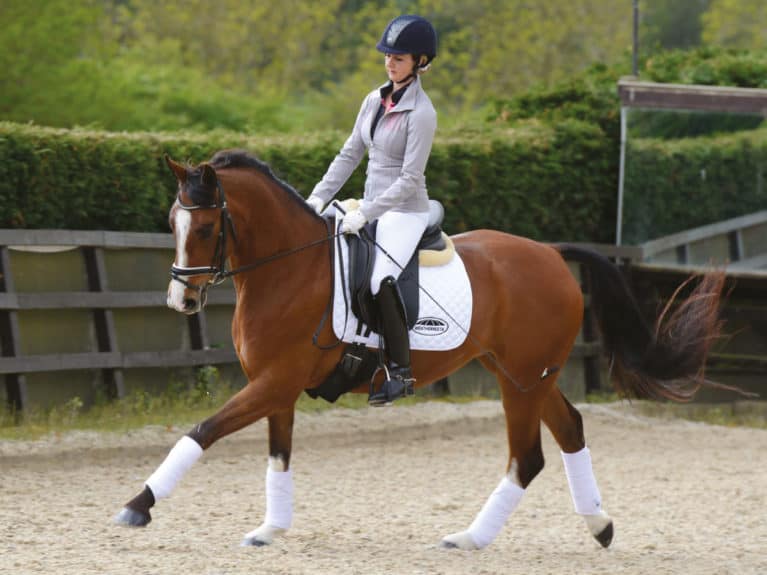
Our quick and easy sessions are intended to take just 30 minutes, including a warm-up and cool-down, and we’ve even allocated a spare five minutes to allow you to concentrate on one exercise in particular. You’ll have that glass of wine in your hand before you know it!
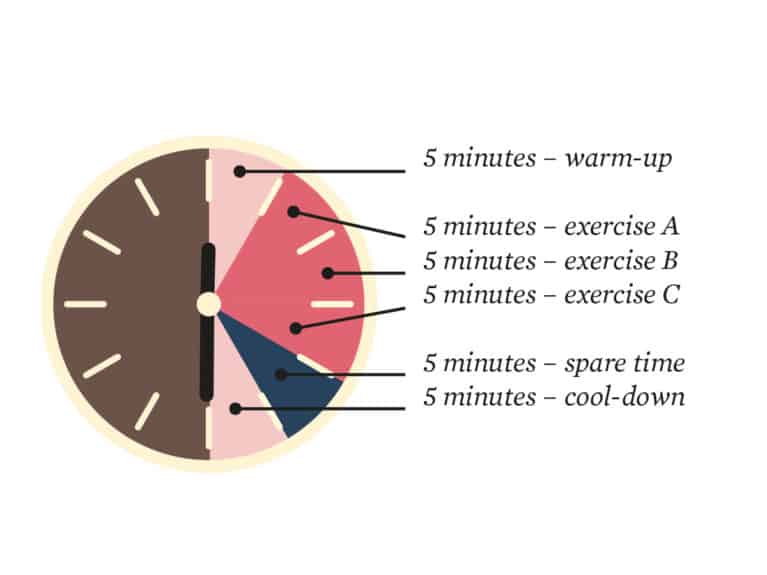
Warm-up
Build up through walk, trot and canter on a long, but not loose, rein to encourage your horse to stretch forwards and down, engaging his topline. You should still be able to influence where he goes and what he does, but the contact will be softer than during the main part of your session. Carrying your hands slightly lower and further apart than normal will encourage him to stretch down.
Ride lots of transitions, both between and within the paces, to get him in front of your leg and promote engagement. Working on a 20-metre circle will help him relax and increase flexibility and suppleness, but vary where you ride your circle every few circuits and change the rein frequently so he warms up evenly.
Cool-down
End your session with a few minutes of stretching work in walk and trot to allow your horse’s muscles to cool down properly and aid recovery. The cool-down is still part of your training session, so don’t just let him amble along – keep his topline engaged and encourage him to carry himself long and low. Finish up by walking him for a few laps of the school on a loose rein until he’s stopped blowing.
Top tip – If you need a bit longer on any of the exercises, don’t forget that we’ve included a spare five minutes (indicated with an S) so you can focus on one in particular.
Thirty minute flatwork session 1 – building impulsion

If your horse is prone to being lazy, it can feel like you’re endlessly nagging him with your legs. The problem with this is that your aid becomes less effective, and you’re caught in a vicious circle where your horse needs more and more input to keep going. It’s much more beneficial to use quick, sharp aids and encourage him to move forward under his own steam. You’ll need to keep his brain working, too – long periods of trotting or cantering around the school will cause him to switch off.
A. Transitions between paces
While they may seem simple, the key to correct transitions is to maintain an even, active rhythm without letting your horse rush forwards or fall onto his forehand. Keep your leg on and use half-halts to keep his hindlegs engaged. Try walking for four steps, then six steps of trot, four steps of walk and finally halt. Alternatively, make a transition at every marker – pretend you’re doing a dressage test and aim to make the transition exactly on the marker.
B. Transitions within the pace
In trot, use a half-halt to slow the pace for a few strides, while maintaining a consistent contact. Then use your inside leg to ask your horse to power forward into a bigger trot for a few strides. The rhythm shouldn’t change – instead, your horse should simply shorten and lengthen his stride while still staying in front of your leg. As he gains strength and confidence, you can ask for more lengthened or collected strides, and greater expression and contrast. As a test, trot between two markers and count how many strides it takes. Set a goal of adding an extra stride for your collected trot and losing a stride for your lengthened trot. When you’ve achieved that, try to gain or lose a second stride. Once you’ve cracked it in trot, have a go in canter.
C. Leg-yield into canter
Trot down the three-quarter line and use your inside leg on the girth to push your horse towards the track, while using your outside leg behind the girth to control the angle of his quarters. Ask for a little flexion to the inside – you should just see the edge of his eye and nostril – but support him with the outside rein to stop him falling out through his shoulder. When you reach the track, ride an upwards transition into canter.
Thirty minute flatwork session 2 – promoting suppleness
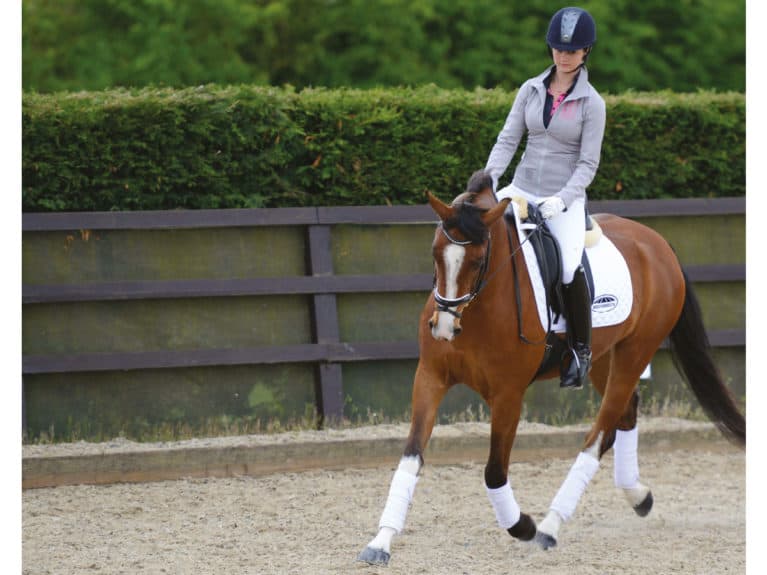
Suppleness is an important part of dressage success, plus it makes your horse much more pleasant to ride. He’ll probably be more supple on one rein than the other, so it’s important to work his stiffer side. Avoid pulling your horse’s head into a bend with your inside rein – use your aids in harmony to encourage bend through his whole body, rather than just his neck.
A. Spirals
Place a cone at the centre of the arena and ride a 20-metre circle around it in walk, encouraging your horse to stay balanced and relaxed. Start to spiral in towards the cone until your spiral is as small as he can comfortably achieve while remaining balanced. After a couple of rotations, start to spiral back out again, using an on-off pressure from your inside leg to move him over while offering support from your outside aids. Repeat this exercise in trot and canter on both reins once you’re happy doing it in walk.
B. Flexion and counter-flexion
Ask for some flexion and counter-flexion as you ride around the arena. Avoid asking for too much bend in his neck and shoulders, as this will put him off-balance and increase the chance of falling on his shoulder in an attempt to secure his hindleg. Instead, slightly open your hand and wrist on the inside of the flexion and reward your horse when he responds.
C. Travers and renvers
Also known as quarters-in and quarters-out, travers and renvers both encourage flexion through your horse’s quarters and spine, and improve gymnastic ability as he has to put more weight through his inside hindleg. Initially, start riding both of these movements down the long side, as the wall of the arena will help guide your horse and keep him straight. To ask for travers, put your weight in your inside seat bone and use your inside aids to encourage and maintain the bend. Use your outside leg to push his quarters over, while your inside hand controls the degree of bend. Once you’ve managed that, have a go at renvers – the aids are switched over, so your horse is bending around your outside leg and the inside aids prevent him falling out. In both movements, your shoulders and hips should mirror your horse’s shoulders and you need to face the direction of travel.
Thirty minute flatwork session 3 – improving your outline
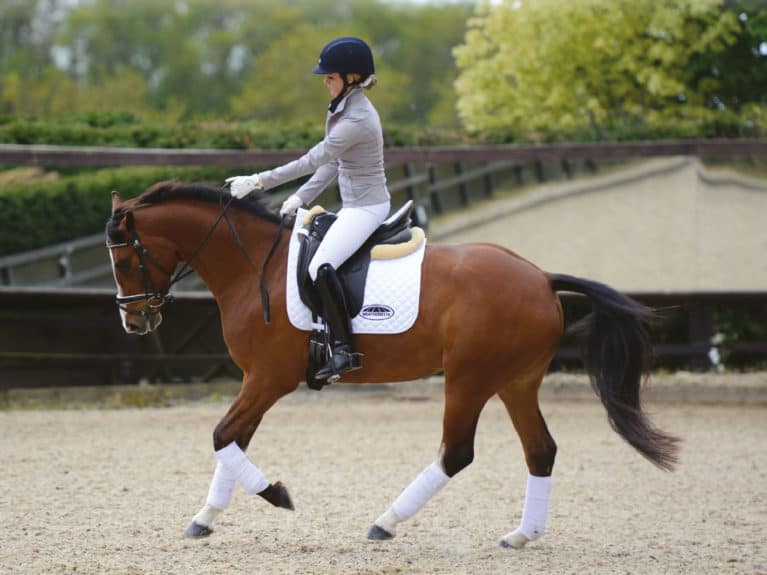
A correct outline is the basis of good performance, whether you’re interested in flatwork or jumping. It allows your horse to maximise his athletic potential and use his body positively, while becoming more relaxed and supple. When he’s working correctly, he’ll transfer the majority of his weight onto his hindquarters, becoming more uphill in his movement.
A. Powering up
Establish a 20-metre circle in trot. Once your horse is comfortably settled in the rhythm, use your inside leg to generate power and encourage activity in his quarters. Keep a soft, elastic contact and check he’s not just rushing forwards, while your outside leg supports his body. This isn’t a medium trot, just more power in your working trot. Maintain it for no more than one circuit, then power down for one lap before repeating.
B. Give and retake the reins
As well as being a required movement in many dressage tests, this exercise is a good test of whether your horse is in self-carriage, rather than relying on you to hold him together. Start by giving your inside rein, then swap to your outside rein, and finally give both together. The act of giving and retaking the reins can be broken down into three steps, done over three or four of your horse’s strides. First, give with the reins so that there are clear loops in them. Keep your upper body tall and your core strong – don’t tip forward as it will unbalance your horse. Next, keep your hands forward so you can test if your horse remains in self-carriage. Finally, smoothly take up the reins again – there should be no change in impulsion or rhythm throughout the whole exercise.
C. Quarter pirouettes
In order to do a correct pirouette, your horse must take his weight onto his quarters. On the inside track, shorten his walk while maintaining impulsion. Without stopping, use your inside rein to ask for a little bend, holding your outside rein against his neck to encourage his forehand to move round and to control any forward movement. Your inside leg should stay at the girth to encourage bend, while the outside one asks him to step round by going slightly behind the girth. Then move forwards in the same active walk you started with. Repeat the quarter pirouettes and walk steps so that you’re riding a square.
Thirty minute flatwork session 4 – relieving tension
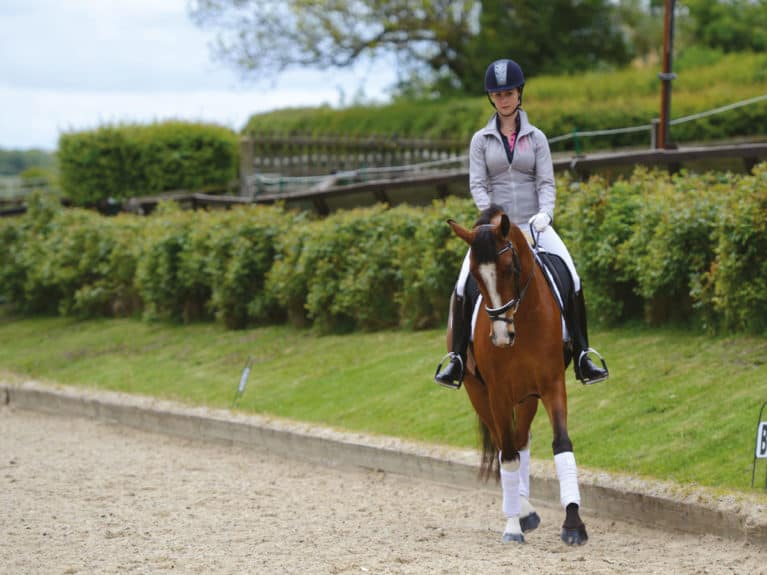
With a horse who can be fizzy or tense, the temptation is often to use pressure on his mouth to keep him contained. However, this nagging with your rein aid can lead to him ignoring it and, let’s be honest, in a battle of strength your horse is always going to win. Instead, encourage him to concentrate on where his feet are going and focus on you for direction, so you can use your leg and seat aids more effectively without having to put pressure on his mouth. Get his brain working by keeping him busy!
A. Serpentines
Establish working trot and ride some three- and four-loop serpentines across the school on both reins. Varying the number of loops you do on each serpentine will stop him anticipating what you’re going to ask for next, so he’ll have to concentrate. Focus on staying balanced around the turns and use your outside aids to keep your horse from falling out. If he starts to rush, slow the rhythm of your rising, raise your hands slightly to lift his poll and use your leg to encourage him to shift his weight onto his quarters.
B. Small circles
Start by riding a 15-metre circle in trot at one corner. It’s harder to rush on a circle, so as your horse becomes more balanced and supple, start to shrink the circle down to 10 metres. When you’ve got him balanced on this smaller circle, move off and start to ride more 10-metre circles at each marker, staying on each one until he’s balanced and relaxed. Once you’ve completed one lap of the arena, have a go at this exercise in canter using 15-metre circles, and then ride it on the other rein, too. Your horse will find one side easier than the other, so work on his preferred rein first to build his confidence before switching.
C. Leg-yield zig-zags
Trot down the three-quarter line. Once you’re straight, ask your horse to leg-yield back out to the track, using your inside leg to push him over and your outside aids to prevent him falling out. When you reach the track, allow him a stride or two to straighten up and rebalance before asking him to leg-yield in the other direction back to the three-quarter line – he may be more resistant to leave the track than travel towards it, so be clear and firm with your aids. Keep the angle of your leg-yield shallow at first, but as you become more proficient, you’ll be able to increase the number of zig-zags you can fit into each long side. Once you’re confident going between the track and the three-quarter line, try travelling between the centre line and the three-quarter line, which is more difficult because you don’t have the edge of the arena to support you.
Thirty minute session 5 – finding balance
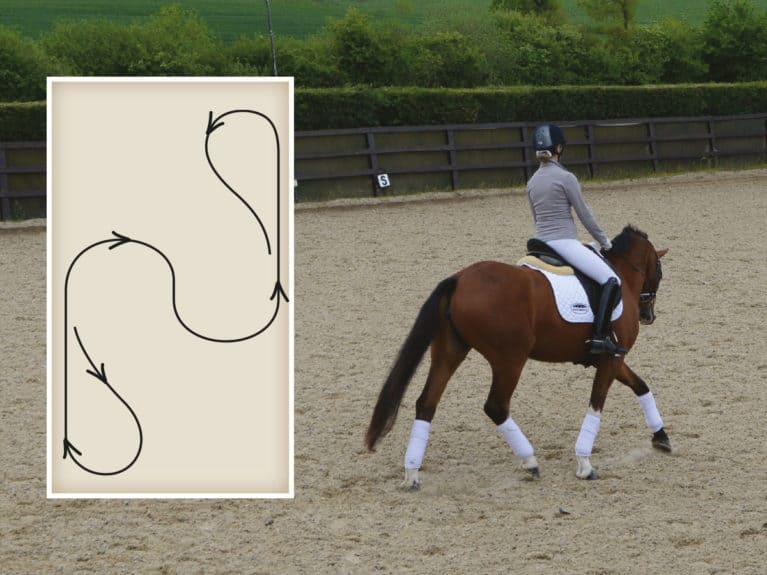
If your horse is unbalanced, he’s more likely to fall in or out on turns, or be unable to maintain momentum without you supporting him. Balance is an important part of self-carriage, which is where your horse is able to carry himself correctly without input from you.
A. Serpentines to the centre line
Ride some three- and four-loop serpentines down the arena, but only go as far as the centre line before looping back to the track. Changing the direction of the bend tests your horse’s balance and helps you stay focused. Because serpentines require you to bend in both directions, you’ll be working both sides of your horse equally.
B. Shoulder-in
Trot down the long side of the arena. Use your inside rein to flex your horse to the inside, so that his shoulders and forelegs move onto the inside track. Your inside leg helps to create the bend and keep him moving forwards, while your outside leg supports his shoulder. Use your outside rein for additional support and, if you’re attempting shoulder-in for the first time, initially only bring your horse’s shoulders in slightly. Once he understands what you want him to do, you can start to ask for a little more angle.
C. Riding shapes
In the corner of the arena, ride a demi-volte, finishing on the track. Carry on down the track and smoothly turn into two half 10-metre circles in the middle of the school, so you’re riding an S-shape from one side to the other. When you reach the track again, ride straight, then do another demi-volte so that you end up back on your S-shape. Try this exercise in walk first until you get the hang of it, then give it a go in trot.
Thirty minute flatwork session 6 – off the forehand
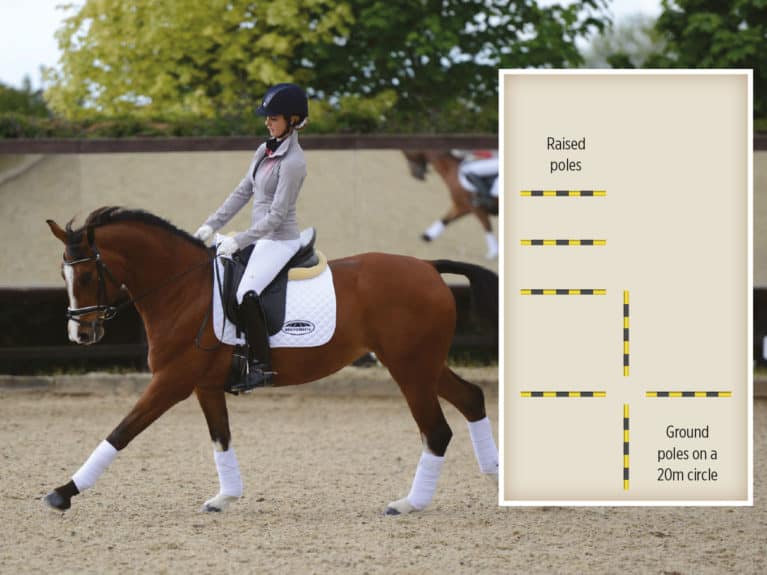
To work in a correct outline, your horse needs to learn to shift his weight off his forehand and onto his quarters. This will have the effect of rounding his spine and encouraging him to step under with his hindlegs, rather than balancing on your hands. Collection is a key part of doing this, which can be encouraged using transitions and polework.
Walk to canter transitions
Achieve an active walk that feels compact and together, so that when you ask for an upwards transition your horse is able to step forwards into the canter. Try for a clean transition, without any shuffling or trot strides, and avoid throwing the reins away or tipping your upper body forwards, as this will unbalance your horse. Instead, engage your core muscles, sit tall and bring your outside leg slightly back to ask for canter. After a few distinct canter strides, prepare to transition back down into walk using half-halts. After a few walk strides, canter again.
Simple changes on a figure of eight
Pick up a forward, balanced canter and ride a figure of eight using the whole arena. As you cross the diagonal, ask for a transition forward into walk – heading towards the wall should encourage your horse to back off. After a few clearly-defined walk strides, pick up canter again on the opposite leg so you’re on the correct lead for the next part of your figure of eight. As your horse gets the hang of the exercise, try to reduce the number of walk steps so you’re doing as few as possible between transitions – ideally you want between three and five steps.
Polework
Put out a line of three or four raised poles down the long side of the arena and trot over them, keeping an active, even rhythm. Plan your turn so you’re riding straight before you reach the poles and use your outside leg to make sure your horse doesn’t fall out around the bend. Keep an even pressure on the reins and look up and ahead, rather than at the poles. The raised poles will encourage him to step under his body and take his weight on his haunches. In one half of the school, set out four poles on a 20-metre circle at 90° angles. Circle your horse in trot, focusing on keeping an even and balanced bend. Once you’re comfortable with both sets of poles individually, link them together, so you come over the raised poles onto the circle or out of the circle onto the raised poles.
Your Comments
One thought on “Thirty-minute flatwork exercises”
Leave a Reply
You must be logged in to post a comment.




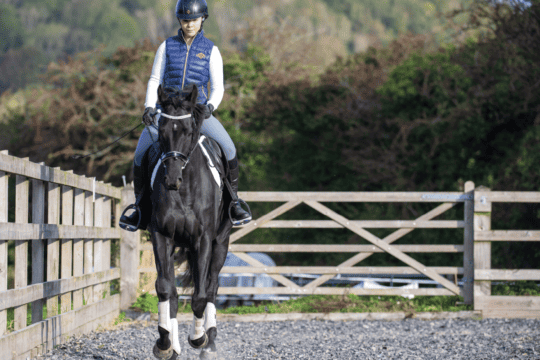
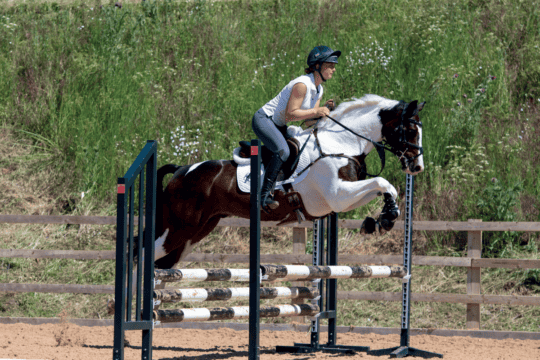
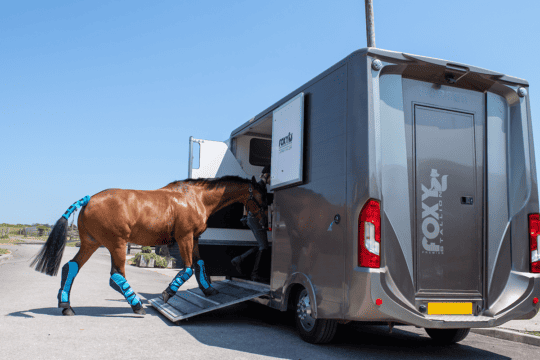

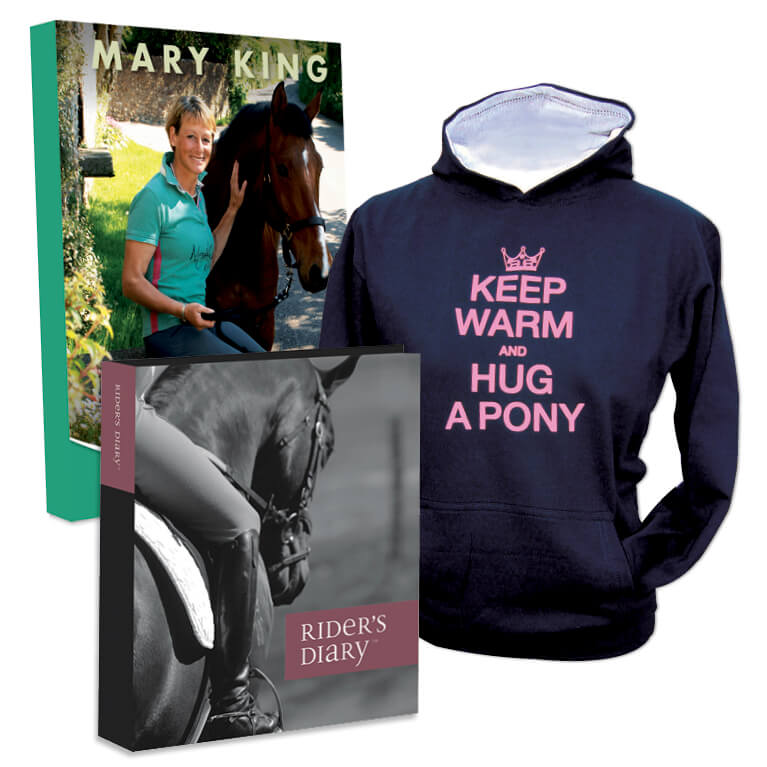

These are awesome, thanks so much.